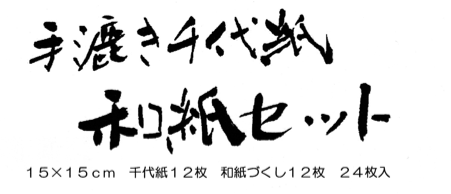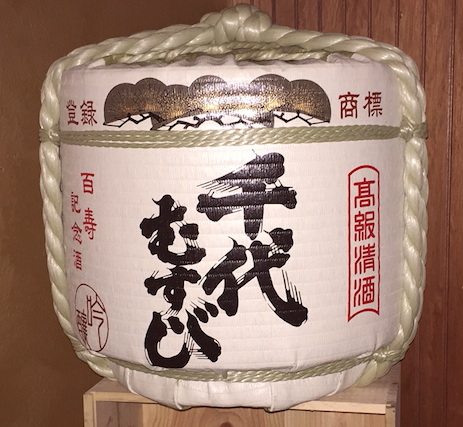Forever Connected
I'm always impressed by how the body has given rise to fascinating figurative Japanese expressions. You'll find three in the following quiz. Match each to a definition (steering clear of the false definitions that I've thrown in for fun):
1. ť†≠„ĀęśĚ•„āč („Āā„Āü„Āĺ„Āę„ĀŹ„āč) head + to come
2. ŤĄõ„ĀęŚā∑śĆĀ„Ā§ („Āô„Ā≠„Āę„Āć„Āö„āā„Ā§) leg, shin + wound + to have
3. śéĆšł≠„ĀģÁŹ† („Āó„āá„ĀÜ„Ā°„āÖ„ĀÜ„Āģ„Āü„Āĺ) palm + in + jewel
| a. to have a guilty conscience | e. heavy-handedness |
| b. to get mad | f. apple of one's eye |
| c. to act conceited | g. dizziness |
| d. to have a chip on one's shoulder | h. There's a bad apple in every barrel |
I'll block the answers with a preview of the most recent essay:
Okay, here we go.
1.b. ť†≠„ĀęśĚ•„āč („Āā„Āü„Āĺ„Āę„ĀŹ„āč: head + to come) means "to get mad."
The syntax "(body part) + „ĀęśĚ•„āč" generally means "to have something go wrong with a (body part)." If a boxer takes a hard punch and has trouble standing up, the Japanese call that Ť∂≥„ĀęśĚ•„āč, where Ť∂≥ („Āā„Āó) means "legs." If one catches the flu and has loose stools as a result, people say ŤÖĻ„ĀęśĚ•„āč, where ŤÖĻ („ĀĮ„āČ) means "belly." So it’s fairly likely that ť†≠„ĀęśĚ•„āč originally indicated a problem with the head.
Unfortunately, dictionaries don’t give a clear explanation about the idea behind this expression, but Nihon Kokugo Dai-Jiten says it refers to blood that rushes to the head because of anger, sadness, or fear. Kojien primarily defines ť†≠„ĀęśĚ•„āč as “to have alcohol or toxins go to the brain, causing one to act crazily,” with “to get angry” as a secondary definition.
2.a. ŤĄõ„ĀęŚā∑śĆĀ„Ā§ („Āô„Ā≠„Āę„Āć„Āö„āā„Ā§: leg, shin + wound + to have) means "to have a guilty conscience." The ŤĄõ is non-Joyo, as is ÁĖĶ („Āć„Āö: wound) in this alternate rendering: ŤĄõ„ĀęÁĖĶśĆĀ„Ā§.
My proofreader's sources don't indicate the idea behind this term. He assumes that the “wound” is a figurative reference to guilt about the past but has no idea why the shin would be involved.
3.f. śéĆšł≠„ĀģÁŹ† („Āó„āá„ĀÜ„Ā°„āÖ„ĀÜ„Āģ„Āü„Āĺ: palm + in + jewel) means "apple of one's eye." If a father regards his daughter as his śéĆšł≠„ĀģÁŹ†, it feels to him as if she's a gem in his hand. This doesn't have to do with controlling or manipulating her. Rather, he feels that she's close to him.
At the heart of the expression lies this one, which is a different matter:
śéĆšł≠ („Āó„āá„ĀÜ„Ā°„āÖ„ĀÜ: in the hand; (something) easily manipulated) palm + in
Speaking of hands, I recently received a beautiful gift from Japan with this label on the packaging, and śČč (hand) is the first kanji:

The first line is by far the hardest to read:
śČ蜾ȄĀćŚćÉšĽ£Áīô
Handmade decorative paper with colorful patterns
śČ蜾ȄĀć („Ā¶„Āô„Āć : “handmade" (esp. paper));
ŚćÉšĽ£Áīô* („Ā°„āą„ĀĆ„ĀŅ: decorative paper with colorful patterns)
Wow, look what happened to the Áīô! The non-Joyo śľČ means "to manufacture paper."
The subsequent writing is much more legible:
ŚíĆÁīô„āĽ„ÉÉ„Éą
Set of washi papers
ŚíĆÁīô* („āŹ„Āó: Japanese paper)
ŚćÉšĽ£Áīô12śěö
12 pieces of decorative paper with colorful patterns
-śěö* (-„Āĺ„ĀĄ: counter for flat things)
ŚíĆÁīô„Ā•„ĀŹ„Āó12śěö
12 pieces with all kinds of washi
-„Ā•„ĀŹ„Āó (-ŚįĹ„ĀŹ„Āó: all kinds of)
24śěöŚÖ•
Containing 24 pieces (of paper)
-ŚÖ• (-„ĀĄ„āä: containing)
A few notes are in order:
• Inside ŚćÉšĽ£Áīô („Ā°„āą„ĀĆ„ĀŅ: decorative paper with colorful patterns) lies ŚćÉšĽ£ („Ā°„āą: (1) thousand years; (2) very long period; forever), but why? Various sources provide these theories:
1. The paper features cranes or turtles, both of which represent long life (ŚćÉšĽ£).
2. The paper was used in Chiyoda (ŚćÉšĽ£ÁĒį) Castle in Edo (the old name for Tokyo).
• Glancing at „Ā•„ĀŹ„Āó, I immediately assumed that it was just -šĹú„āä (-„Ā•„ĀŹ„āä: making) in another form. When I dug into the matter, I was surprised to find that „Ā•„ĀŹ„Āó corresponds to -ŚįĹ„ĀŹ„Āó (all kinds of). Furthermore, I was thrown off to learn that ŚįĹ is a Joyo kanji. It doesn't look as though it would be!
• I've blogged before about multiple suffixes in a row, and yet they never fail to surprise me. We have another example with 24śěöŚÖ•. It's more common to see this type of -ŚÖ• as -ŚÖ•„āä, but I suppose they decided it was time to stop writing with ŚÖ•. I'll make the same decision now!
‚ĚĖ‚ĚĖ‚ĚĖ
Postscript
Right after I wrote this blog I headed to San Francisco for dinner at a place called Tsunami, where I saw this saké barrel:

What's this?! Could that really be ŚćÉšĽ£?! Indeed, ŚćÉšĽ£„āÄ„Āô„Ā≥ is the name of a saké brewery („Ā°„āą„āÄ„Āô„Ā≥), so named in the hopes that the saké would be a bond to connect („āÄ„Āô„Ā≥ or ÁĶź„Ā≥) people forever (ŚćÉšĽ£). How about that?! I now feel forever connected to the word ŚćÉšĽ£!
‚ĚĖ‚ĚĖ‚ĚĖ
Did you like this post? Express your love by supporting Joy o' Kanji on Patreon:



Comments